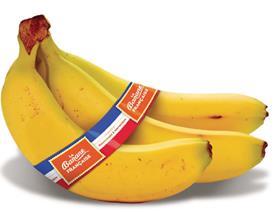
Banana producers in the French West Indian islands of Guadeloupe and Martinique this week announced the launch of the 'Fair Trade French Banana' brand, with the aim of supporting smaller farms hit hard by Hurricane Maria last September, Le Figaro reported.
The launch, which took place at the Salon de l’Agriculture in Paris, marks a progression from the 2015 introduction of the “French Banana”, a range of premium fruit, sold individually and wrapped in a tricolour ribbon to denote its origin.
Speaking about the “French Banana” label, Philippe Ruelle, director of UGPBAN, the Union of Banana Producer Groups, said that the concept had worked well.
“The brand is now distributed in nearly 2,100 stores,” he said, “and we hope to reach the threshold of 3,000 outlets by the end of 2018.”
The “Fair Trade French Banana”, which will hit stores by May of this year, will be presented in the same way, according to Ruelle.
“We want to support small family farms, from three to five hectares, which produce less than 500 tonnes of bananas per year,' he said. Such farms represent more than two thirds of UGPBAN’s 600 members.
The brand guarantees a fixed annual price for the producer, with each banana sold under the mark fetching €0.50 instead of €0.45.
To qualify for use of the brand, however, farmers must reach particular environmental, social and qualitative standards.
'Producers will have to be exemplary, especially in terms of the environment,” said Ruelle. “The goal is to arrive at a crop without pesticides, even if for now we cannot hope to eliminate fungicides, because of diseases on the fruit.”
UGPBAN's goal is for around thirty small producers to grow between them around 6,000-10,000 tonnes of 'Fair Trade French Bananas' per year.
Although this represents a small fraction of the 200,000 tonnes produced in an average year in the Caribbean, volumes could increase in the coming years, with plans for 100-150 producers to adopt the brand within three years.
Thanks to the damage caused by Hurricane Maria last September, when 85-90 per cent of the crop was destroyed in Guadeloupe and up to 60 per cent in Martinique, banana volumes from the Caribbean will be lower than normal this year.



